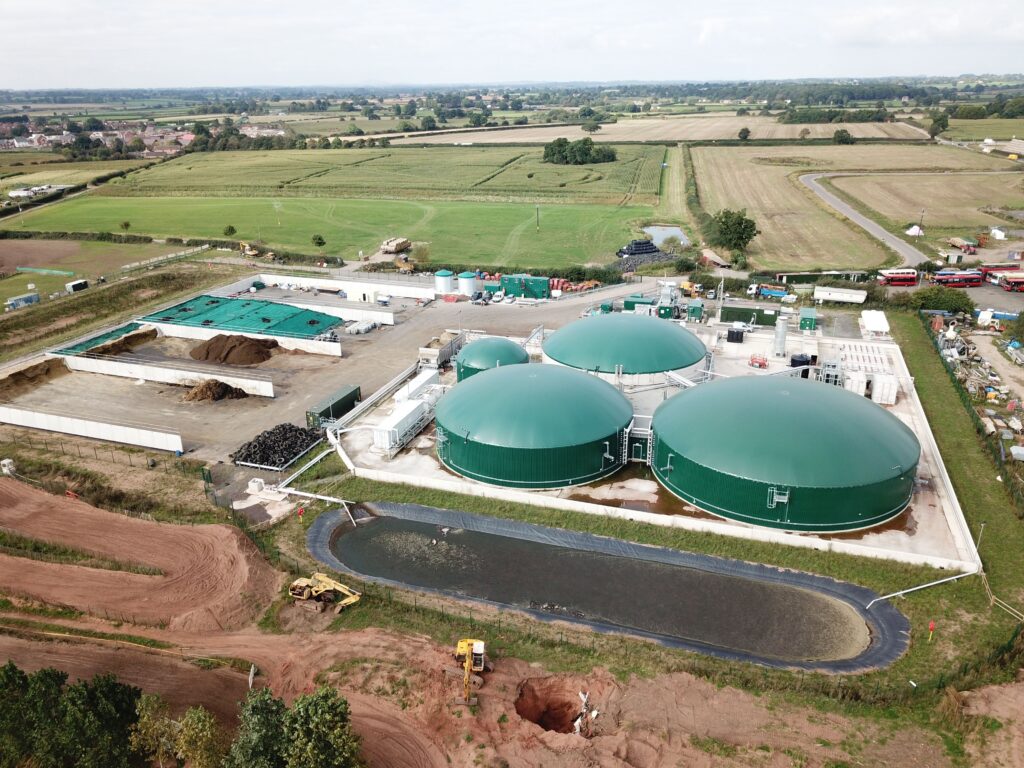According to the Waste & Resources Action Programme (WRAP) and National Non-Food Crops Centre (NNFCC), over 100 (106) anaerobic digestion (AD) plants are currently operating outside of the water industry including those treating both farm and food waste.
.jpg)
And, of these, the NNFCCsaid that around half (46) are specifically designed to treat food waste, with a capacity to treat around 1.8 million tonnes of waste a year and generate 5MW of electricity. There are also an additional 12 in construction which a combined capacity of 0.68 million tonnes and an electrical generating capacity of 30MW.
The full list of food waste AD plants can be found below.
Comparison
Dr Matthew Aylott from the NNFCCtold letsrecycle.comthat it was hard to draw comparisons between the 46 figure and that published last year in Defras AD Action Plan progress report (see letsrecycle.com story), because the way in which AD plants are classified has changed. The Defra report claimed that there were 48 AD plants treating waste feedstock in mid 2012.
He said: Since then the way Defra has decided AD plants should be classified has changed. Now as opposed to food or farm fed plants there are three categories: The first is agricultural, the second are community food waste treatment plants, where food waste is collected from multiple sources, like supermarkets, hospitality providers and households, to be converted into heat, power and fertiliser and the third are industrial on-site plants treating waste for big food processors. Around 15-20 plants, such as McCains potato AD plant, have now been moved into that last category.
This years industry show and conference, UK AD & Biogas 2013, will play host to the AD industrys annual awards ceremony, organised by letsrecycle on behalf of ADBA. The UK AD and Biogas Industry Awards will showcase all aspects of the AD & biogas industry and reward the best of the best in their class, raising the profile and benefits of the industry in the process.
As a result, Dr Aylott said that the growth in AD plant numbers treating food waste had not stalled as the numbers might suggest and was still growing, with a dozen or so coming on line over the past 12 months.
He said: We are on target with the number of food waste plants planned or in construction to have 200 AD plants by 2020 a target set out by the National Farmers Union.
He explained that while Defra had set out no targets in its AD Action Plan, the government had been tackling barriers to AD growth through measures such as WRAPs 10m AD loan fund and investment by the Green Investment Bank, which is targeting energy from waste as a priority area and recently invested in an AD plant in Dagenham, London.
He said: The barriers to finance are easing slower probably than perhaps people had anticipated five years ago but we are heading in the right direction.
Commenting on the AD figures in general a Defra spokesperson said: “AD is a valuable technology that can turn food and farm waste into renewable energy and valuable fertiliser, we welcome the continuing development of the sector from 54 plants when the AD Strategy was published in June 2011 to more than 100 now,”
“Working with stakeholders, we continue to take forward the AD Strategy and Action Plan which is tackling the barriers to further uptake of AD.”
Plants
The full list of food waste or community biogas plants currently in operation is:
1.AC Shropshire Ltd
2.Adnams Brewery
3.All Waste Services Ltd, Llangadog -Burdens
4.Anaerobic Digestion Development Centre (ADDC)
5.APS Salads
6.Avonmouth Organic Food Waste Treatment Plant (GENeco, Wessex Water Enterprises)
7.Battle Farm (Agrivert Ltd)
8.Biffa – Cannock
9.Binn Farm (TEG Biogas)
10.Bore Hill Farm Biodigester
11.Branston Ltd
12.Clayton Hall Farm
13.Deerdykes Composting and Organics Recycling Facility
14.Farington Waste Recovery Park (Global Renewables)
15.Fernbrook Bio Ltd
16.Gask Farm (John Rennie & Sons Farmers Ltd)
17.Green Tye (aka Guy & Wright Ltd)
18.GWE Biogas
19.Harper Adams (Energy) Ltd
20.HMP Guys Marsh Prison (Burdens)
21.Holsworthy
22.Insource Energy – Rogerstone Park
23.Langage Farm
24.Local Generation Ltd
25.Lodge Farm Digester
26.Lower Reule Bioenergy
27.Mauri Products Ltd.
28.Northwick Estate
29.Orchard House Foods
30.Organic Power
31.Oxford Renewable Energy Ltd
32.ReFood
33.Scottish and Southern Energy (SSE) Barkip Biogas
34.Sefter Farm (Barfoots of Botley)
35.Shanks (Orgaworld) – Glasgow
36.South Shropshire Biodigester (aka Biocycle)
37.Staples Vegetables
38.Swancote Farm (John Davies Farms Ltd)
39.Thornton Waste Technology Park (Global Renewables)
40.Twinwoods
41.University of Southampton Science Park (USSP)
42.Viridor Waste Management Ltd – Newton Heath
43.Wanlip
44.Waterbeach
45.Western Isles Waste Management Facility – Comhairle nan Eilean Siar
46.Westwoods Plant








Subscribe for free